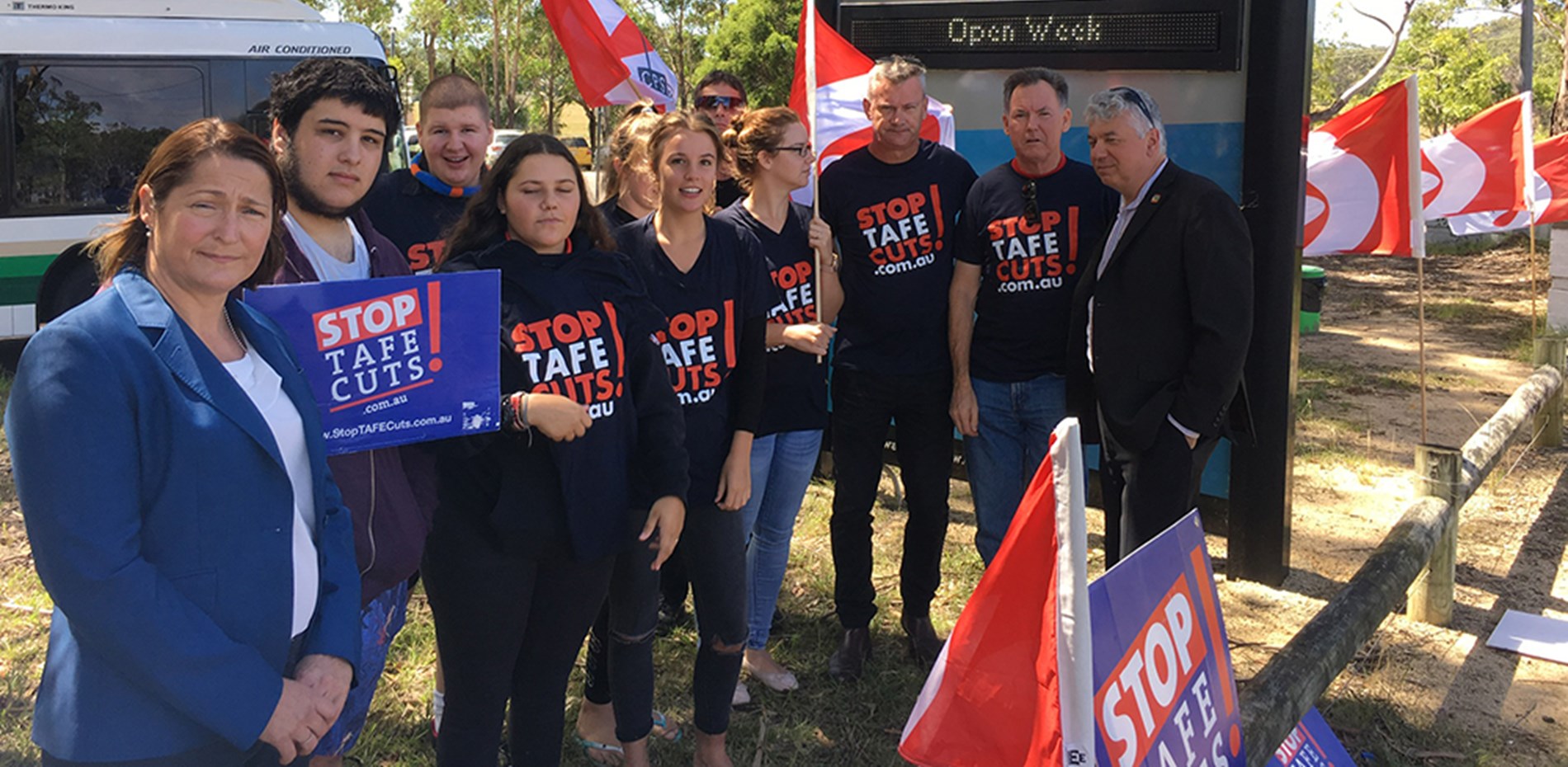Mrs PHILLIPS (Gilmore) (11:06): I rise today to speak about something very dear to my heart, and I thank the member for Cooper for bringing this motion on skills and vocational training before the House. As a former TAFE teacher and work placement coordinator, I understand how vitally important a quality TAFE and vocational education and training sector is to developing a skilled workforce, re-engaging an unemployed and underemployed workforce and providing essential upskilling to mature-aged workers. I have said this many times in this place now, but this is a key fact I think those opposite don't seem to understand.
In my electorate of Gilmore, under this government we have seen the lowest workforce participation rate in Australia. More than half of my electorate are not active participants in the workforce. Under this government, my electorate has the highest youth unemployment rate in New South Wales at 18.7 per cent. These might sound like just numbers to some people, but I know what the reality of these numbers means. I have spent many years in education, skills and training on the South Coast of New South Wales. At the Shoalhaven schools Workplace Learning program, I worked with young people training for work. I worked as a TAFE teacher at the TAFE Nowra campus. I taught in outreach, where I went out into communities, such as Sanctuary Point and East Nowra, to help students on the path to training and work. I taught young people for whom school was perhaps not the best fit for them—young mums, young dads and mature-aged people who may have faced a change in life circumstances and were there to help make their families' lives just a bit better—to gain the skills for training and work. Indeed, that is one of the main reasons why I'm standing here as a member of parliament in this chamber today. I remember vividly when a group of my mature-aged students turned to me with a genuine plea for help and said, 'We are just not getting the help we need from employment providers,' and they turned to TAFE. It is difficult for me to turn away from that.
There are many success stories of TAFE, like our terrific local organisation, the Cullunghutti Aboriginal Child and Family Centre. Cullunghutti participated in a TAFE outreach program and that resulted in Cullunghutti starting up Cullunghutti Catering, which provides the most amazing Indigenous food whilst also boosting local jobs and helping to provide essential services for Aboriginal children and their families in our community. But, ironically, the TAFE outreach program that was providing substantial benefits in Gilmore, in terms of training and helping create business and jobs, was axed along with the axing of all pre-apprenticeship programs under the coalition government. That's what $3 billion in cuts from TAFE looks like. It impacts real people, families, businesses, opportunities and our communities.
A better TAFE system is an essential investment in training for our local community. We need to be investing in TAFE to make sure we give students, young and mature age, the equipment, resources and facilities they need to succeed. There are local solutions that could easily be implemented across TAFE campuses on the New South Wales South Coast to help reduce the unemployment rate and to lift the workforce participation rate. But this requires the government to stop and to actively listen. I hear regularly about the impact minimum class numbers for TAFE courses has on students. This is simply disadvantaging regional and rural students. Our regional area is not like the city. We may not have the same student numbers as in the city, but our students, young and mature age, are just as deserving and they are calling out for help.
Under the coalition government, the VET system has been damaged by funding cuts, privatisation, excessive competition policy and poor regulation. Just yesterday, I was talking with a mature age constituent who had been really struggling to find work. He wanted to go back to TAFE but at a cost of $7,000 it was just not possible. He was lucky; he found work. He wasn't just talking about himself; he wanted to make sure that people got the help that they need.
This government has cut $3 billion from TAFE and training. My community is facing an unemployment crisis, but this government just wants to rip funding away. How can this government expect young people to find a job when they haven't been properly invested in to gain the skills they need? How can this government expect mature age Australians who want to retrain and reskill to get a job? They want to re-enter the workforce but they need the skills to do it. They need this government to invest in them and not just continue to cut funding. I call on the government to reverse these cuts, to guarantee the public TAFE and to invest in the workforce of the future.



